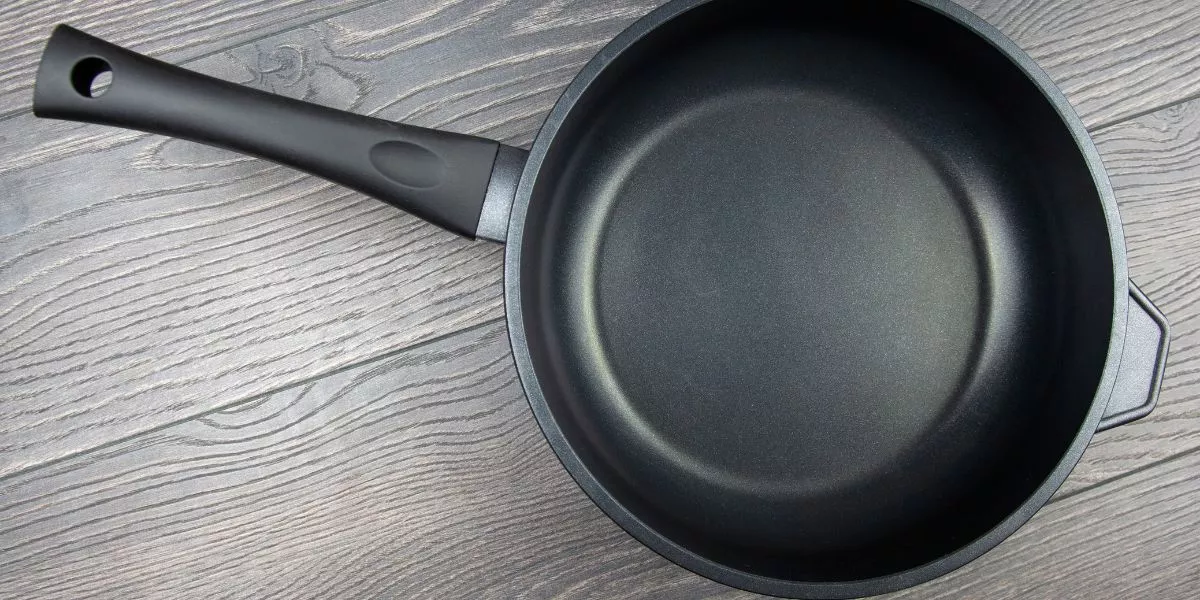
When it comes to ensuring the safety of your non-stick cookware, it's crucial to be vigilant. Scratches, peeling, and discoloration are indicators that shouldn't be overlooked. But what about the lesser-known signs that could point to potential hazards lurking in your kitchen arsenal? Stay tuned to uncover the hidden clues that could impact not just your cooking experience, but your health as well.
Visual Inspection of Cookware
When examining your cookware visually, check for any scratches, peeling, or discoloration as these signs may indicate potential safety concerns. Scratches in non-stick coatings can lead to the release of harmful chemicals into your food. Peeling coatings not only affect the performance of your cookware but can also pose health risks if ingested. Discoloration may suggest overheating, which can cause the non-stick coating to break down and release toxins.
Additionally, look for any warping or dents in the cookware. Warped pans may not heat evenly, affecting the cooking process and potentially burning your food. Dents can compromise the integrity of the cookware, making it more prone to damage and reducing its lifespan.
Regular visual inspections of your cookware are crucial for ensuring its safety and performance. If you notice any of these signs, it may be time to replace your non-stick cookware to prevent potential health hazards and maintain the quality of your cooking experience.
Testing Non-Stick Coating Integrity
Inspect the integrity of the non-stick coating on your cookware by conducting simple tests to ensure its safety and effectiveness.
One effective way to test the coating is by heating the cookware over low heat with a few drops of water. If the water beads up and dances on the surface, the coating is intact. However, if the water spreads out and forms a thin film, it indicates wear and tear on the coating.
Another test involves running your finger along the surface of the cookware. A good non-stick coating should feel smooth and consistent. If you notice any rough patches, peeling, or flaking, it's a sign that the coating may be compromised.
Additionally, using a soft sponge or cloth to clean the cookware instead of abrasive materials can help maintain the coating's integrity.
Evaluating Wear and Tear Signs
To assess wear and tear signs on your non-stick cookware, visually examine the surface for any rough patches, peeling, or flaking. Rough patches indicate that the non-stick coating may be wearing off, which can lead to food sticking and potential health risks.
Peeling or flaking of the coating is a clear sign that the cookware needs to be replaced, as ingesting these particles can be harmful. Check the handles and edges as well, as these areas often show signs of wear first.
Scratches on the surface can also be indicators of deterioration, particularly if they're deep enough to expose the underlying material. Additionally, if you notice a significant change in the non-stick properties of the cookware, such as food starting to stick more frequently, it may be time to consider replacing it.
Regularly inspecting your non-stick cookware for these wear and tear signs is crucial for maintaining its safety and performance.
Considering Safe Cooking Practices
Examine your cooking habits to ensure you're following safe practices when using non-stick cookware. Start by avoiding high heat settings, as overheating non-stick pans can release harmful fumes. Opt for low to medium heat to prevent degradation of the non-stick coating. Additionally, refrain from using metal utensils that can scratch the non-stick surface, leading to potential health risks. Instead, choose silicone, wood, or plastic utensils to preserve the integrity of the coating.
Another crucial practice is to hand wash your non-stick cookware with a gentle sponge and mild dish soap. Avoid abrasive cleaners that can wear down the non-stick coating over time. Furthermore, store your non-stick pans carefully, ensuring they aren't stacked with heavy objects on top that could cause damage. Regularly inspect your cookware for signs of wear and tear, such as peeling or chipping, and consider replacing them if necessary to maintain a safe cooking environment. By adopting these safe cooking practices, you can prolong the lifespan of your non-stick cookware and safeguard your health.




